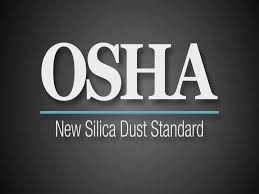Why OSHA’s Finalization of Stricter Silica Standards Endangers Roofing Contractors

By Trent Cotney.
The construction industry has been allotted only one year to come into compliance with OSHA’s stricter silica standards.
After years of controversy, the Occupational Safety and Health Administration (OSHA), has finalized its stricter standards for silica use. The final rule, titled Occupational Exposure to Respirable Crystalline Silica, has the power to hinder the roofing industry with a flood of unattainable and uncompromising regulatory requirements. The rule took effect on June 23, 2016 and the construction industry has been allotted only one year to come into compliance, while most all other industries have been afforded two to five years to acclimate.
The rule establishes an array of new requirements, but the one most impactful on the roofing industry concerns a stricter permissible exposure limit (PEL) for respirable crystalline silica (silica). With exposure now limited to an 8-hour time-weighted average of 50 micrograms per cubic meter of air, the new limitation is actually five times lower than what was previously required for the construction industry. Such a toughening of regulatory standards is unprecedented— amongst any industry—which is why its promulgation has faced such staunch resistance.
Opponents of the rule have voiced two major concerns: (1) that the requirements are virtually impossible to comply with and (2) that the requirements are in fact counter-productive in that they make working conditions less safe for roofers. As for the first concern, many hold that the rule is neither technologically nor economically feasible. Not only is it said that current available technology is incapable of even meeting the new PEL limits, but one particular analysis has concluded that minimal compliance would require approximately $1 million per plant, plus an annual cost of nearly $225,000.00 (Regulatory Indifference Hurts Vulnerable Communities, United States Chamber of Commerce). If the industry as a whole purportedly had such difficulty meeting the prior, less restrictive requirements, how could it be expected to turn around one year later and fully comply with limits five times stricter?
As for the concern of roofers’ safety on the job, common sense alone should have preempted OSHA from pursuing this regulatory nightmare. With workers’ safety as the number one overriding factor for OSHA’s existence in the first place, it is baffling that it would force these new requirements on the roofing industry. For instance, in order for roofers to attempt to reach new PEL limits, new engineering controls, such as the purchase of specialized equipment, wetting and/or vacuuming, must be implemented into daily rooftop practices. In addition, when new PEL levels are inevitably missed, roofers will additionally be required to where respirators, only hindering their ability to see and avoid potential dangers.
With roofing deaths at its lowest in over a decade, it is astonishing that OSHA would pick now to force the roofing industry to expend millions of dollars in an effort to comply with impossible standards that will only make the profession more dangerous. OSHA’s purported desire to create safer work environments, through limiting workers’ exposure to silica, is not a particularly egregious aspiration in and of itself. However, a federal agency, with the power to create actual, binding law, must take into account such blatantly obvious considerations as the ones the roofing industry has been pointing out for years.
Author’s note: The information contained in this article is for general educational information only. This information does not constitute legal advice, is not intended to constitute legal advice, nor should it be relied upon as legal advice for your specific factual pattern or situation.
Trent Cotney is General Counsel and a director of the Florida Roofing & Sheet Metal Contractors Association (FRSA), the Treasurer of the West Coast Roofing Contractors Association (WCRCA), a member of NRCA and several other roofing associations across the United States.
For more information, contact the author at 813-579-3278 or go to http://trentcotney.com/


















Comments
Leave a Reply
Have an account? Login to leave a comment!
Sign In